Last updated on August 5th, 2024 at 07:35 am
Gwalior, an ancient city in Madhya Pradesh, India, is celebrated for its vibrant cultural legacy and architectural wonders. Whether you’re a history buff, an architecture enthusiast, or simply a traveler seeking new experiences, Gwalior offers many attractions. Here, we explore the top 5 famous places in Gwalior that you shouldn’t miss.
1. Gwalior Fort
Gwalior Fort is one of the most famous tourist places in Gwalior, standing majestically on a rocky hill. This fort, often called the “Gibraltar of India,” offers stunning views of the city and boasts intricate architecture.
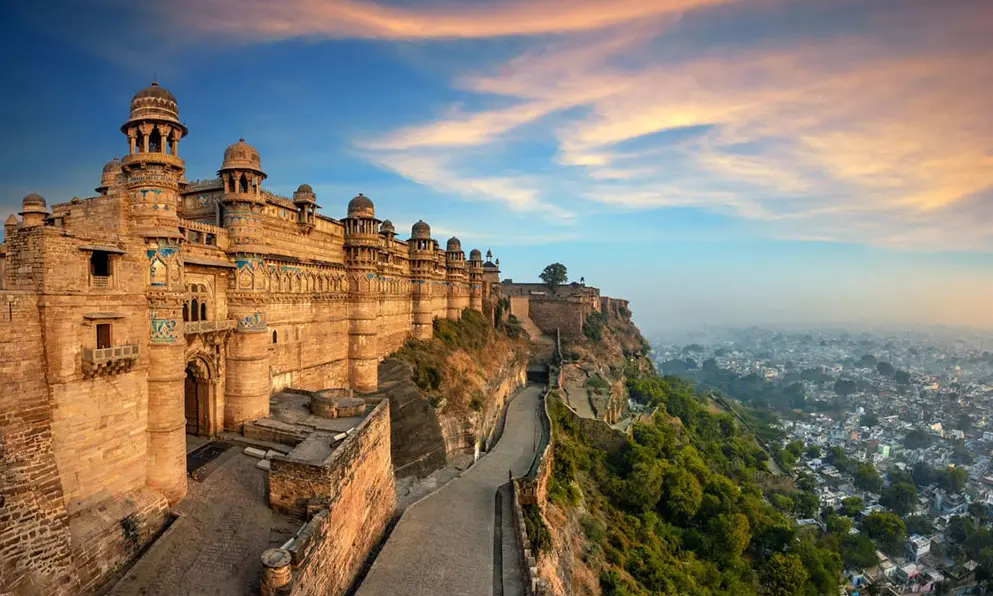
History – Due to its strategic importance, Gwalior Fort has been a focal point in many historical conflicts. It was a significant stronghold for the Mughals, who captured it in the 16th century. The fort’s control oscillated between various powers, including the Marathas, the British, and the Scindias, each leaving their mark on its history. Among the famous places in Gwalior, the fort stands out as a prominent landmark that reflects the rich historical tapestry of the region.
One of the most notable events associated with the fort is the First War of Indian Independence in 1857. The fort was a key site of resistance against British colonial rule, with many freedom fighters, including Rani Lakshmibai of Jhansi, making their last stand here. The fort’s involvement in this pivotal moment in Indian history adds to its legacy as a symbol of resistance and bravery. It is also one of the Best Places to Visit in Gwalior that highlights the city’s rich historical significance.
- Architectural Marvel: Features notable structures like the Man Singh Palace, Gurjari Mahal, and Sas Bahu Temples.
- Sound and Light Show: An evening attraction that narrates the fort’s history with an engaging light show.
Gwalior Fort is a majestic reminder of India’s rich history, attracting tourists worldwide with its architectural splendor and historical significance. The evening sound and light show narrates tales of courage, betrayal, and glory. Visitors can explore famous places in Gwalior like the Gujari Mahal Museum, housing rare artifacts, and enjoy breathtaking panoramic views of Gwalior city.
Click here for the location map
Visit other location:- Places to Visit in Indore | Places to Visit in Bhopal | Places to Visit in Jabalpur
2. Jai Vilas Palace
A blend of Tuscan, Italian, and Corinthian styles, the Jai Vilas Palace is another famous places in Gwalior. This 19th-century palace is now a museum showcasing royal artifacts.
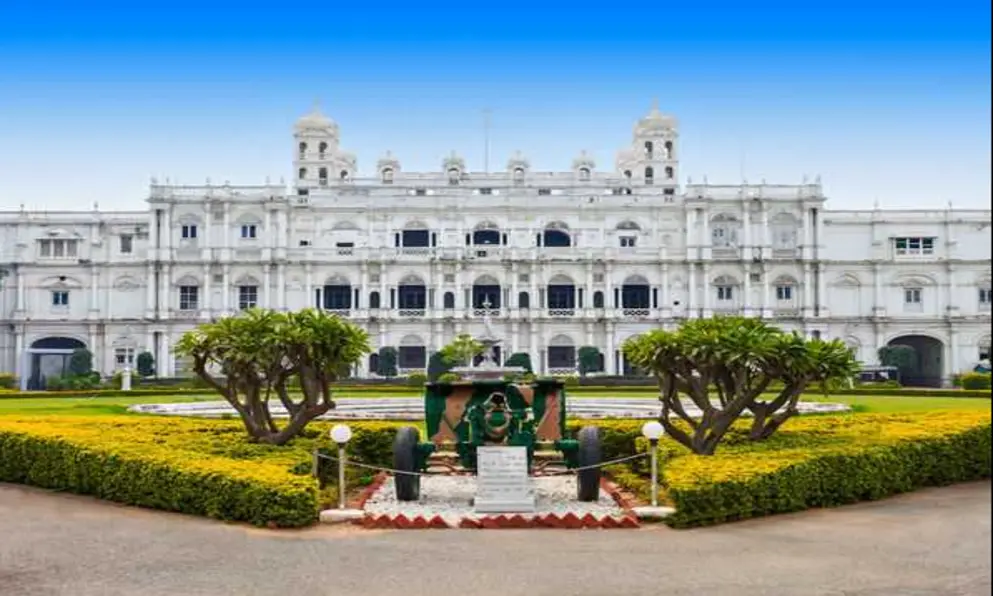
History – The construction of Jai Vilas Palace was supervised by Sir Michael Filose, a renowned architect of that era. The palace beautifully marries the Tuscan, Italian-Doric, and Corinthian architectural styles, making it a visual treat for visitors. Spanning across 12,40,771 square feet, the palace boasts 400 rooms, each meticulously designed and adorned with intricate details. Jai Vilas Palace is one of the famous places in Gwalior, drawing numerous visitors who admire its grandeur and historical significance.
The Durbar Hall, the centerpiece of the palace, epitomizes grandeur. It features two of the world’s largest crystal chandeliers, weighing nearly 3.5 tons. Legend has it that a dozen elephants were used to test the strength of the roof before the chandeliers were installed. The hall is decorated with lush Persian carpets, ornate furniture, and walls adorned with gold leaf work, reflecting the regal lifestyle of the Scindias. Famous tourist places in Gwalior also include the Gwalior Fort, the Sas Bahu Temples, and the Jai Vilas Palace.
- Royal Collection: Houses a collection of manuscripts, paintings, and sculptures.
- Opulent Interiors: The Durbar Hall, with its massive chandeliers and ornate ceilings, is particularly impressive.
- Museum Exhibits: Displays items from the Scindia dynasty, including royal costumes, weapons, and personal belongings.
Jai Vilas Palace is not just a symbol of architectural splendor but also a cultural landmark that attracts tourists from across the globe. It offers a deep dive into the history, art, and culture of the region, providing an immersive experience for history enthusiasts and tourists alike. The palace is a popular destination for those seeking to explore the rich heritage of Gwalior and to witness the grandeur of Indian royalty. It stands out as one of the famous places to visit in Gwalior, drawing visitors with its majestic beauty and historical significance.
The palace grounds also host various cultural events and exhibitions, contributing to the promotion of local art and culture. These events provide a platform for local artists and craftsmen to showcase their talent, thereby preserving and promoting the traditional art forms of the region. Additionally, the palace is one of the famous places in Gwalior, attracting numerous visitors and adding to the city’s cultural heritage.
Click here for the location map
See more location:- Tourist places in ongole | ratlam places to visit | ranchi beautiful places
3. Sun Temple (Surya Mandir)
Inspired by the famous Sun Temple of Konark, the Sun Temple in Gwalior is a relatively modern addition to the city’s historic landscape but is equally captivating.
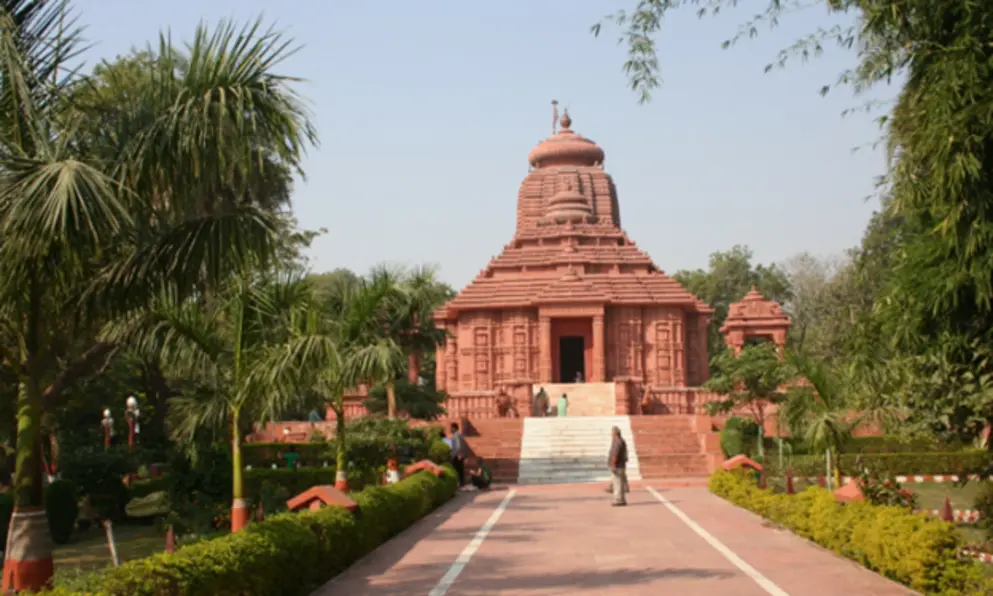
History – The Sun Temple in Gwalior, also known as Surya Mandir, is a relatively modern structure, built in 1988 by the renowned industrialist G.D. Birla. Despite its recent origins, the temple’s design draws heavily from the ancient Sun Temple of Konark in Odisha, emulating its intricate carvings and awe-inspiring structure. This blend of modern construction with traditional design principles creates a unique and captivating monument that bridges the past and the present, making it one of the famous places in Gwalior.
- Architectural Design: The temple’s design is striking and built with red sandstone and white marble.
- Peaceful Ambiance: A serene place for worship and reflection.
- Beautiful Gardens: Surrounding gardens enhance the temple’s tranquility, making it a perfect spot for a stroll.
The Sun Temple, a famous tourist places in Gwalior, is not just an architectural marvel; it is a place of deep spiritual significance. The Sun God has been venerated in Hindu culture since ancient times, representing health, wealth, and prosperity. Devotees flock to the temple to offer their prayers and seek blessings, especially during the festival of Makar Sankranti, which marks the transition of the Sun into the zodiac sign of Capricorn.
The temple’s serene ambiance, coupled with the rhythmic chants of the priests and the fragrance of incense, creates a tranquil environment conducive to meditation and introspection. Visitors often find a sense of peace and rejuvenation within the temple’s sacred precincts.
The Sun Temple, one of the famous tourist places in Gwalior, is easily accessible from various parts of Gwalior. It is located in the Morar Cantonment area, about 5 kilometers from the Gwalior Railway Station. The best time to visit is during the early morning or late afternoon when the sun’s rays enhance the temple’s beauty, casting a warm, golden glow on its sandstone walls.
The temple is open to visitors throughout the year, and there is no entry fee, making it an accessible and welcoming destination for all. Whether you are a devotee, a history enthusiast, or an architecture aficionado, the Sun Temple of Gwalior, one of the famous places to visit in Gwalior, promises a rich and fulfilling experience.
Click here for the location map
Visit other location:- Virar places to visit | Places to Visit in Ratlam
4. Tansen’s Tomb
This memorial to the legendary musician Tansen, one of the nine gems of Emperor Akbar’s court, is a famous tourist place in Gwalior.
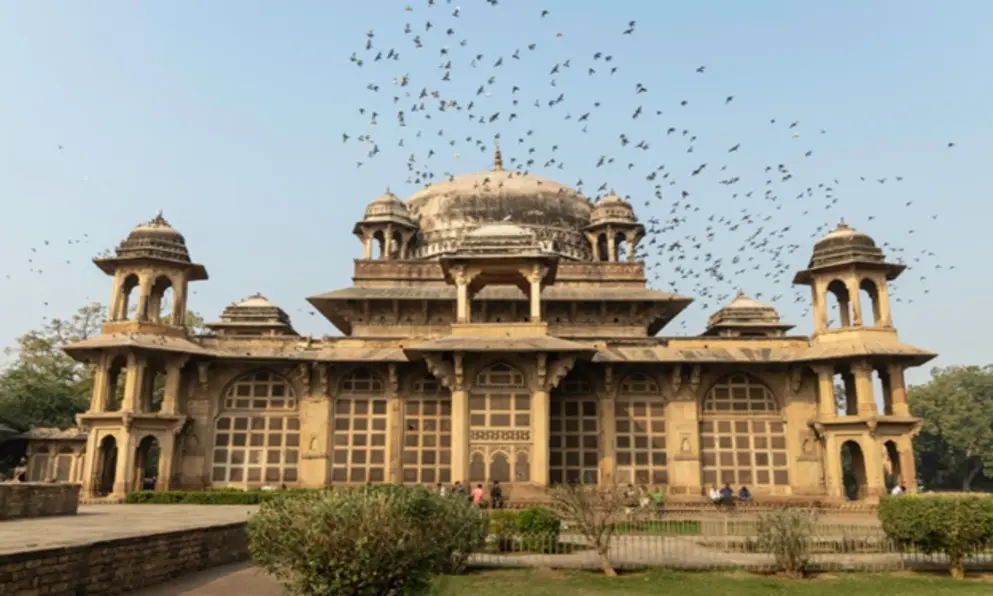
History – Tansen was one of the nine gems (Navaratnas) in the court of the Mughal Emperor Akbar. Born in the early 16th century in Gwalior, a city renowned for its famous places to visit in Gwalior, Tansen’s musical genius earned him a place of honor in the annals of Indian history. His ability to create and perform ragas, which are complex musical structures, revolutionized the classical music tradition. Legend has it that his music could light lamps, bring rain, and tame wild animals. Such tales, whether apocryphal or not, underscore the extraordinary impact of his artistry.
- Musical Heritage: An important site for music lovers, with annual music festivals held in Tansen’s honor.
- Mughal Architecture: The tomb’s design reflects the elegance of Mughal architecture.
- Cultural Significance: Attracts musicians and tourists from around the world, who come to pay homage to the great musician.
Tansen’s Tomb is located in the vicinity of the famous Gwalior Fort, within a complex that also houses the tomb of his mentor, Muhammad Ghaus. Built in the Mughal architectural style, the tomb exudes a serene and majestic aura. The structure is simple yet elegant, reflecting the profound humility and grace that characterized Tansen’s music.
The tomb itself is constructed from red sandstone, a common material in Mughal architecture. It features intricate jaali (lattice) work and arched doorways that add to its aesthetic appeal. The central dome, under which Tansen is interred, is a symbol of the celestial music that he created, rising towards the heavens. This tomb is one of the famous tourist places in Gwalior, attracting visitors who are eager to explore the rich history and architectural beauty of the region.
Every year, Tansen’s Tomb becomes a focal point for musicians and music lovers from all over India and beyond. As one of the famous places to visit in Gwalior, the Tansen Music Festival, also known as Tansen Samaroh, is held annually in December to commemorate his contribution to Indian classical music. During this festival, the tomb resonates with the soulful renditions of ragas, as musicians gather to pay their respects and celebrate Tansen’s enduring legacy.
In the heart of Gwalior, one of the famous places to visit in Gwalior, Tansen’s Tomb remains a serene sanctuary, where the notes of history and music blend seamlessly, creating a melody that continues to enchant and inspire.
Click here for the location map
See more location:- Places to Visit in Rewa |Places to Visit in Pithampur | Places to Visit in Narmadapuram
5. Sas Bahu Temples
The Sas Bahu Temples, also known as Sahastrabahu Temples, are famous places in Gwalior known for their intricate carvings and architectural beauty.
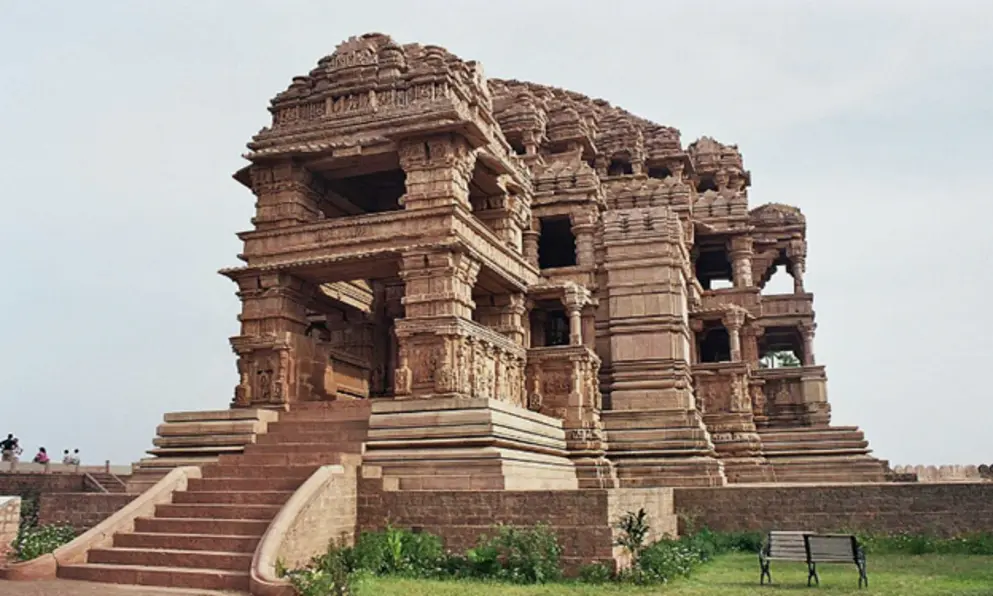
History – The Sas Bahu Temples, also known as the Sas-Bahu Temples, are a pair of Hindu temples dedicated to Lord Vishnu. The temples are believed to have been constructed during the 10th century, during the reign of the Kachchhapaghata dynasty. The term “Sas Bahu” translates to “Mother-in-law and Daughter-in-law,” a reflection of the local legend that the two temples were built by a king for his mother-in-law and his wife. This story, however, is more legend than fact, and the temples are not associated with any historical Sas and Bahu. These temples are among the famous places in Gwalior, celebrated for their architectural beauty and historical significance.
- Historical Importance: Built in the 9th and 10th centuries, these temples are dedicated to Lord Vishnu.
- Architectural Details: Known for their detailed carvings and stunning sculptures.
- Panoramic Views: Situated near the Gwalior Fort, offering beautiful views of the surrounding area.
The Sas Bahu Temples, located on a small hillock, showcase the Nagara style of Hindu temple architecture with their exquisite carvings and intricate decorations. The larger Sas Temple features a grand entrance with elaborate deity and mythical creature carvings, while the smaller Bahu Temple is similarly adorned but on a smaller scale. Both temples boast detailed sculptures illustrating Hindu mythology, including Vishnu’s incarnations and scenes from the Ramayana. Enclosed by a courtyard, the temples are surrounded by ornate pillars that enhance their grandeur. These temples are among the famous tourist places in Gwalior.
Cultural and Religious Importance – The Sas Bahu Temples are architectural marvels of medieval India, renowned for their artistic and religious significance. While not major pilgrimage sites, they attract visitors interested in ancient architecture and history. Local festivals and rituals enhance their cultural vibrancy. Ongoing conservation efforts by the Archaeological Survey of India (ASI) aim to preserve these structures for future generations. Additionally, these temples are among the famous places in Gwalior that showcase the rich heritage of the region.
Click here for the location map
Visit other location:- Places to Visit in Pimpri-Chinchwad | Places to Visit in Tadepalligudem
Conclusion
Gwalior is a treasure trove of history and culture, with its famous places offering glimpses into the past. From majestic forts and palaces to serene temples and cultural landmarks, the famous places in Gwalior provide a rich and diverse experience for every traveler. When planning your next trip, make sure to include these top 5 famous places to visit in Gwalior for an unforgettable journey through history and architecture.
Frequently Asked Questions
Known as the “City of Temples,” Gwalior is famous for its palaces and religious sites. These palaces and temples are top tourist spots. The city also has many traditional markets and shopping malls. Gwalior is well-known for its textiles and handlooms.
Poha and Jalebi are special dishes from Gwalior. This is the most popular breakfast combination in Madhya Pradesh. You can enjoy hot Poha and Jalebi at any time of the day.
Golden peasants, sambhars, bison, hyena, spotted deer, black bucks, and a white tiger make up the variety of wild animals here. Smaller groups of crocodiles, snakes, monkeys, and birds also live in the zoo.
Gwalior was the capital of central India from 1948 to 1956. When central India merged with Madhya Pradesh, Gwalior became a district. This district is named after a famous fort, which got its name from a hill.
Hindi is the main language in Gwalior, spoken by about 96% of people as their first language. About 1% of people speak Sindhi and another 1% speak Marathi.
Madhav National Park has both dry deciduous and dry thorn forests, home to various antelopes like Nilgai, Chinkara, and Deer, as well as predators such as Tigers, leopards, wolves, jackals, foxes, and wild pigs. The park is special because it has both lake and forest environments.
The Culture of Gwalior blends Bundeli and Braj traditions. It showcases Gwalior’s religious, historical, architectural, and artistic heritage through its rich art, music, dance, poetry, and festivals.
Gwalior, known as the Gateway of Madhya Pradesh, will be improved by highlighting the city’s culture and unique identity. The focus for Smart City Gwalior will be on green technology, open spaces, and good urban planning.

